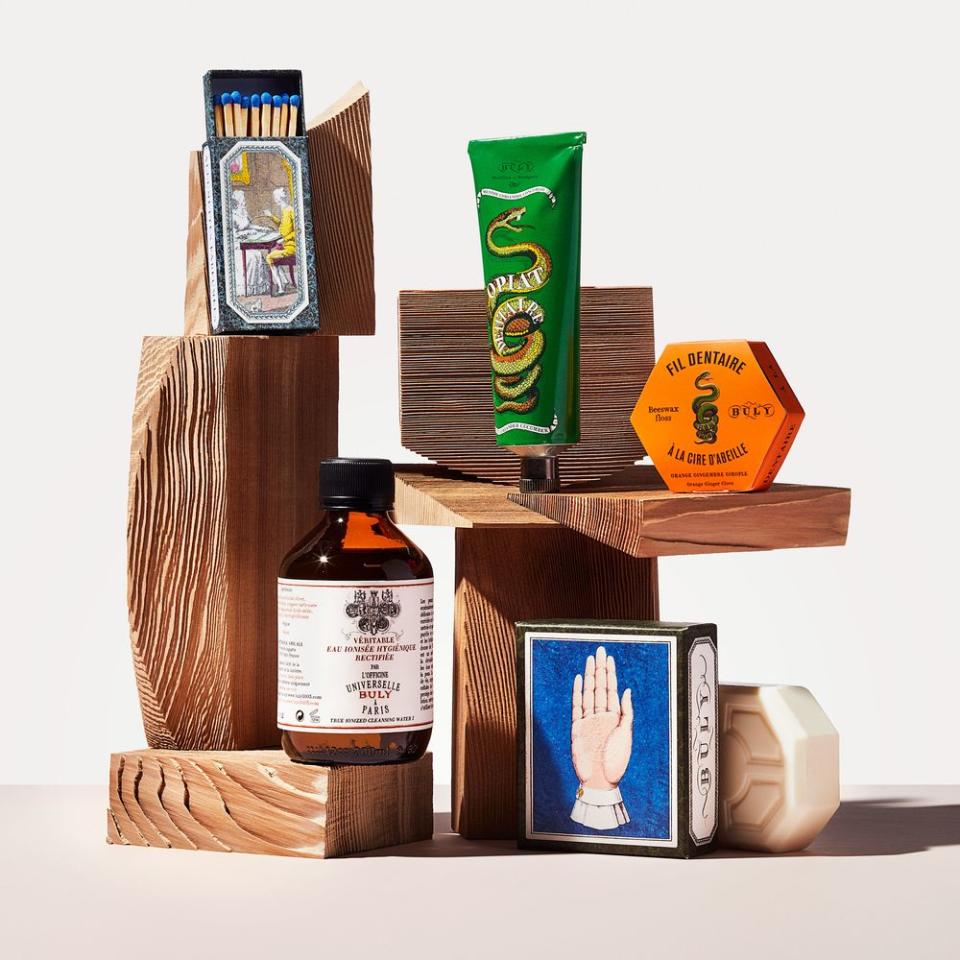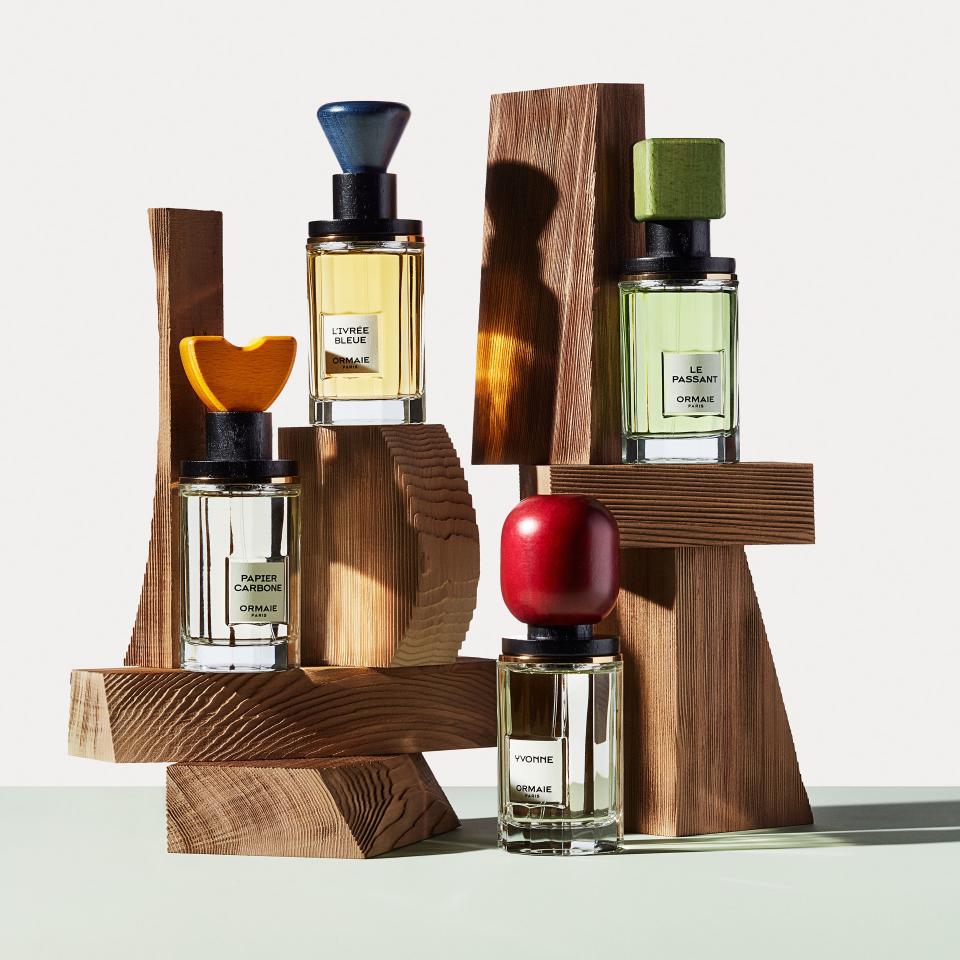The Secret Ingredients of Coveted Niche Beauty Brands
“Beauty wasn’t the initial idea, it was family,” says Xavier Desforges de Caulières, the 36-year-old founder of Maison Caulières—one of the most successful, under-the-radar independent beauty brands out of France. In four years, his body-care line has earned a prominent home within Rosewood luxury hotel properties around the world, from the spa at Paris’s Hôtel de Crillon to the 413 rooms at the group’s new flagship in Hong Kong. That’s all in addition to its loyal VIP following, which included Queen Elizabeth II shortly after the brand launched. But if personalities like actor Marion Cotillard and fashion designer Isabel Marant won’t travel without their Maison Caulières hand cream today, it’s for more than its skin nourishing properties. It’s also for the ancestral know-how, transparency in production, and a compelling story—intangible elements that can catapult a small brand to stardom.
In the $450 billion global beauty industry, cult favorites like Tata Harper, Sachajuan, and Glossier—the direct-to-consumer brand valued at $1.2 billion—have positioned themselves as powerful challengers to heritage brands operating with traditional retail strategies and opaque supply chains. With declining trust in the products we buy—from food to fashion—an increasing number of consumers are looking beyond the conglomerates like L’Oréal and LVMH in search of ultra-transparent and sustainable alternatives. Should they get the formula right, niche newcomers have a rich opportunity.
“Most beauty brands don’t even know who you are because their client is the retailer,” Glossier founder Emily Weiss told How I Built This host Guy Raz in 2018. “Beauty brands build products for the needs of Macy’s and Sephora. Those are shelf-space needs and seasonality needs and margin needs that have nothing to do with you as the customer.” That results, she says, in a subpar brand experience and relationship. Succeeding as an independent beauty or cosmetics label in today’s market requires Glossier-style disruption—in retail experience, product composition, packaging, or story. Above all, it requires listening to what consumers want.

In Desforges de Caulières’s case, that meant looking close to home to shore up the brand’s vision. For 250 years, his ancestors have carried on an agricultural tradition, including his parents, who produce sunflower, rapeseed, and linseed oils at the family estate in the Loire Valley. Originally produced for medicinal purposes, a switch to cold-pressing the oils for culinary use revealed their more cosmetic virtues: His father’s calloused hands became silky smooth. That discovery became the foundation of the brand’s line of body care, from bath oils to lotions, all with ingredients tied to the four seasons.
“We wanted the level of top quality of product that you would typically find only in a spa and translate that into the in-room experience,” says Rosewood Hong Kong managing director Marc Brugger, who adds that the seasonality of the product was also a key selling point. After signing the deal with the hotel, the family-run operation has seen production mushroom from 5,000 per item to 700,000. And that’s saying nothing of their expanded reach.
L’Officine Universelle Buly, a five-year-old company with 19th-century apothecary-style boutiques in locations from Paris to Kyoto, has found success in offering a personal service that giant corporations would struggle to match. Beauty and aromatherapy experts offer tailored advice and easy navigation through what is essentially an old-world cabinet of curiosities with nearly 700 products: botanical-based creams, powders, essential oils, and perfumes. Sundries including combs, silk bristle acetate toothbrushes, and candles come in exquisitely illustrated plastic-free bottles and tubes that clients can personalize with their initials and keep as collectibles.

Meanwhile, the philosophy behind Ormaie, an all-natural unisex perfume line that eschews plastics and impure materials, hinges on two insights: Scents should be an extension of nature, and the bottles they come in should be works of art worthy of the mantle, even when empty. Producing such a concoction took its founders, mother-son duo Marie-Lise Jonak and Baptiste Bouygues, two years to perfect, largely because they had to convince leading noses in Grasse, the town on the French Riviera that’s the nation’s perfume capital, that it was even possible to create a truly natural fragrance that actually smelled good. “Most perfumes are 95% synthetic, and brands dilute their formulas to keep costs down,” says Bouygues, who previously worked for Louis Vuitton and Givenchy. “The benefit of being small is that we can push ourselves creatively and don’t have the same pressures of profitability as a big group. We’re not in this because natural is trendy or to yield huge margins—it’s because we believe in the elegance of nature to create a special olfactive experience.”
That experience, which U.S. consumers can find online or at Barneys New York, comes in seven different scents and is eminently sustainable, inside and out. The bottles are made from recycled glass, and the colored-wood tops, inspired by the work of sculptor Constantin Brancusi, are sourced from renewable forests in France and are hand-carved and polished. Entering the market at 190 euros a bottle (about $215), Ormaie is poised to compete with the industry’s luxury mainstays. Given the climate of transparency, the duo hope to convert customers who traditionally wear big-name synthetic fragrances. Bouygues is optimistic: “It’s like the electric car—if you want people to buy it, it has to be better than the alternative.”
This article appears in the June 2019 issue of Fortune with the headline “Beauty Beyond the Counter.”
More must-read stories from Fortune:
—The 2019 Fortune 500 list demonstrates the prize of size
—It’s all clicking for Wayfair, a Fortune 500 newcomer
—The Fortune 500 has more female CEOs than ever before
—Exploring California’s wine country: Places to go in Napa Valley
—The women-owned restaurants in Nashville you should know about
Follow Fortune on Flipboard to stay up-to-date on the latest news and analysis.


